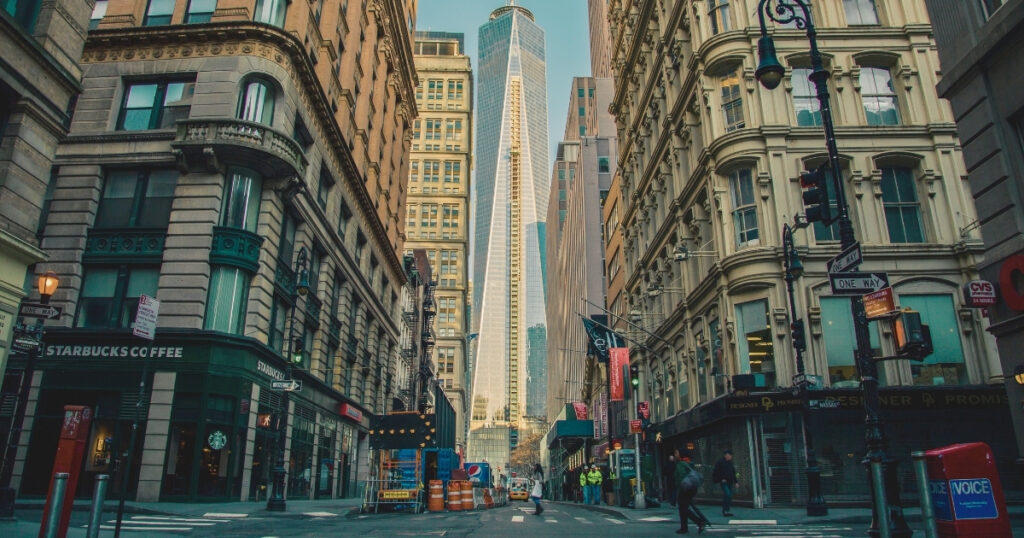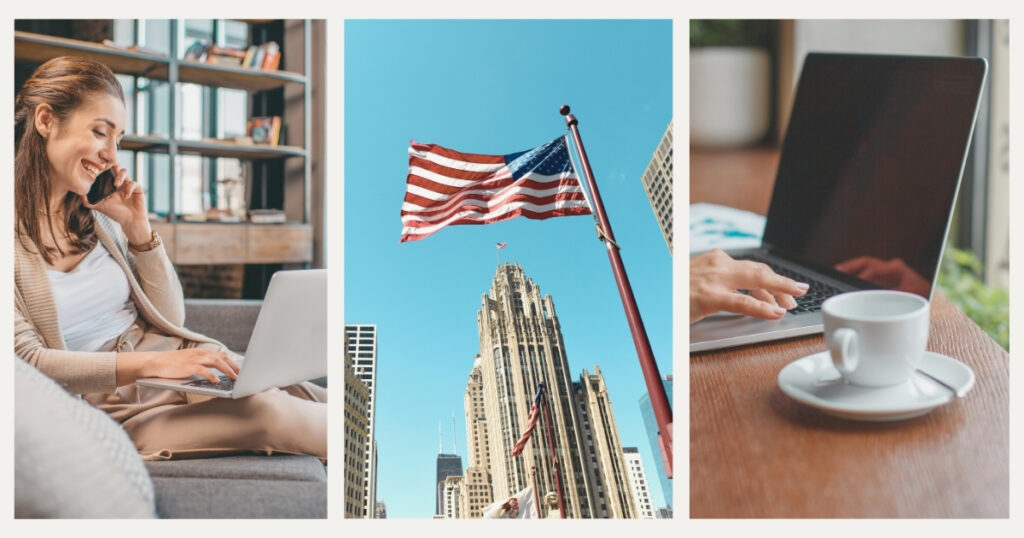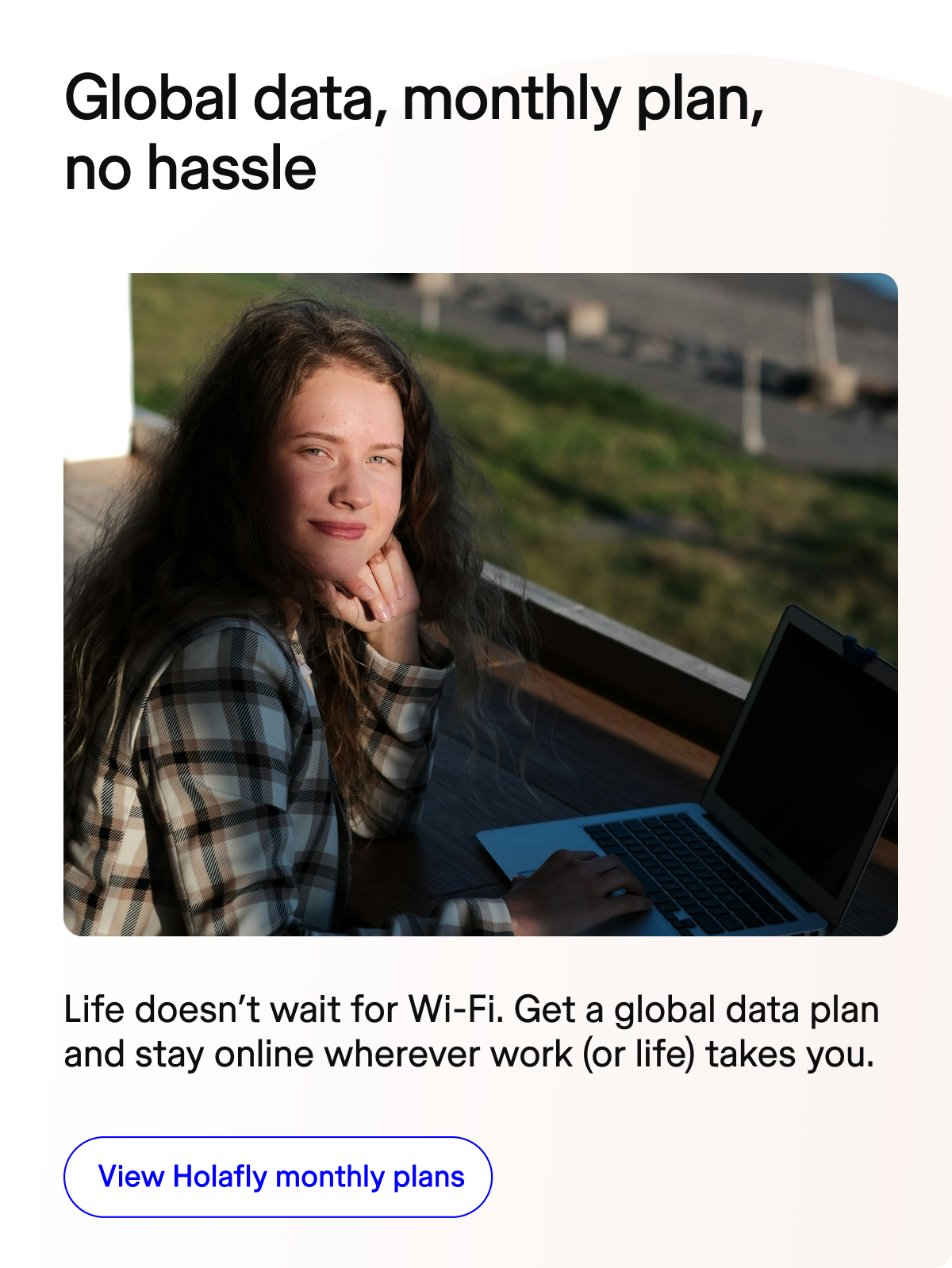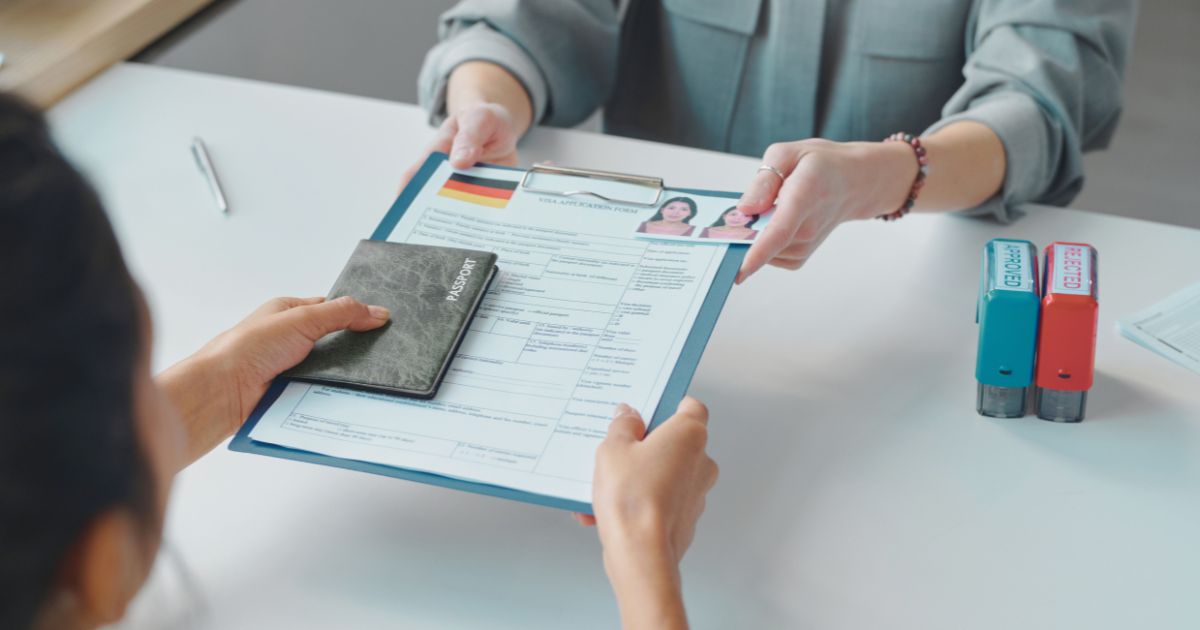The United States remains a top destination for digital nomads and professionals seeking dynamic career opportunities. With its thriving economy, innovative industries, and vibrant culture, obtaining a United States work visa can be a crucial step for any professional looking to advance their career.
However, securing the right United States work visa is essential to legally live and work in the U.S. Whether you’re an entrepreneur, remote worker, or looking for temporary employment, this guide breaks down what digital nomads need to know about navigating the complex U.S. visa system.
Overview of United States work visas
The U.S. offers a range of work visa options depending on your profession, duration of stay, and employer. These visas allow foreign nationals to work legally in the United States, but each comes with specific eligibility criteria and limitations.
Common types of U.S. work visas
- H-1B Visa: for skilled workers in specialized fields like IT, engineering, or healthcare. Requires employer sponsorship.
- O-1 Visa: for individuals with extraordinary abilities in arts, sciences, education, or business.
- L-1 Visa: for intra-company transfers, allowing employees of multinational companies to work in U.S. branches.
- H-2B Visa: for temporary non-agricultural workers, often seasonal positions.
- E-2 Visa: for entrepreneurs and investors from treaty countries establishing a U.S.-based business.
Each visa type caters to specific employment needs, and understanding the differences is key to selecting the right one for your situation.
Who needs a U.S. work visa?

If you’re not a U.S. citizen or permanent resident, you’ll need a work visa to legally engage in employment. This includes remote workers, freelancers, or entrepreneurs planning to work with U.S.-based clients or set up a business in the country.
Digital nomads looking to work in the U.S. should be cautious about their visa status. Tourist visas (B-1/B-2) do not permit employment, and working without the proper visa can lead to penalties, deportation, or being barred from reentry.
🌍 Did you know? Some visas, like the O-1 and E-2, provide pathways for highly skilled professionals and entrepreneurs to bring their expertise to the U.S.
Requirements for a United States work visa

The application process for a U.S. work visa can be complex, requiring several key steps and supporting documents.
1. Employer sponsorship
Many U.S. work visas, such as the H-1B and L-1, require an employer to sponsor your application. This includes submitting a labor condition application (LCA) to the Department of Labor and proving that hiring you won’t negatively impact U.S. workers.
2. Proof of qualifications
For skilled worker visas, such as the H-1B or O-1, you’ll need to demonstrate your qualifications through degrees, certifications, or a proven track record in your field.
3. Application forms and fees
The visa application process involves completing specific forms, such as Form I-129 (Petition for Nonimmigrant Worker), and paying associated fees. You’ll also attend an interview at a U.S. consulate or embassy.
💡 Pro tip: ensure all documents are accurate and complete to avoid delays or denials. Consulting with an immigration lawyer can streamline the process.
How to apply for a U.S. work visa
Applying for a U.S. work visa involves multiple steps, and preparation is key to success:
- Determine eligibility: choose the visa type that aligns with your job and career goals.
- Secure employer sponsorship: if required, your employer must file a petition on your behalf with the U.S. Citizenship and Immigration Services (USCIS).
- Complete the application: fill out the appropriate forms and gather supporting documents, such as proof of qualifications and financial stability.
- Attend the visa interview: schedule an appointment at a U.S. embassy or consulate, where you’ll provide biometric data and answer questions about your application.
- Await approval: processing times vary depending on the visa type and volume of applications.
🌟 Did you know? H-1B visa applications are subject to an annual cap, making it essential to apply early in the fiscal year.
Costs and validity of U.S. work visas

The cost of a U.S. work visa depends on the type of visa and associated fees. For example:
- H-1B Visa: application fees start at $460, with additional costs for premium processing and sponsorship.
- O-1 Visa: fees can range from $460 to $1,500, depending on petition requirements.
- E-2 Visa: costs vary based on the investment amount and treaty-specific requirements.
Work visas typically last between one and five years, with options for renewal or adjustment to permanent resident status (green card) for eligible applicants.
Benefits of a U.S. work visa
Securing a U.S. work visa provides significant advantages for digital nomads and professionals. It grants the legal right to work in the country, ensuring compliance with immigration laws and avoiding penalties. The U.S. job market offers immense opportunities across diverse industries, including technology, healthcare, education, and the creative sector.
Additionally, many work visas serve as pathways to permanent residency, offering long-term stability for those seeking to establish themselves in the United States. Beyond professional growth, living and working in the U.S. fosters global networking, connecting individuals with professionals and businesses worldwide.
Regional considerations for work visa holders

The United States spans a vast geographic area with significant regional differences that impact digital nomads with work visas. Understanding these variations can help you choose the optimal location for your professional goals.
Tech hub advantages for specialized visas
For H-1B and O-1 visa holders in technology fields, certain regions offer distinct advantages. Silicon Valley remains the epicenter for tech innovation and venture capital, while emerging tech hubs like Austin, Seattle, and the Research Triangle in North Carolina offer lower living costs with robust tech ecosystems.
These regions often host immigration-friendly employers experienced with visa processes and extensions. The concentration of similar companies creates more potential for visa transfers if your employment situation changes.
🌟 Pro tip: research state-specific benefits for international workers. Some states offer additional resources beyond federal programs, including specialized networking events and legal clinics to attract global talent.
Cost of living considerations
Digital nomads with United States work visas face significant cost variations between regions. While New York and San Francisco offer unparalleled career opportunities, housing costs can consume over 50% of even high-tech salaries. Meanwhile, emerging hubs like Nashville, Raleigh, and Denver offer strong job markets with substantially lower living costs.
💡 Did you know: some employers in higher-cost regions offer relocation packages specifically for international workers on visas, which can often be negotiated during the hiring process.
Digital infrastructure for remote workers with U.S. work visas

Digital nomads entering the United States with a work visa need reliable connectivity solutions to maintain their professional productivity. Understanding the digital landscape becomes crucial for seamless integration into the U.S. work environment.
Connectivity solutions across the United States
The United States offers robust internet infrastructure in most urban areas, with average speeds exceeding 100 Mbps in major cities. However, connectivity varies between regions, with rural areas sometimes offering limited options.
Major providers like Verizon, AT&T, and T-Mobile offer various data plans, but international visitors often face challenges with credit history requirements or long-term contracts. This is where temporary solutions become invaluable for newly arrived professionals.
🌟 Pro tip: ensure seamless connectivity from day one with Holafly’s eSIM, which provides reliable data access across the United States without physical SIM cards or long-term contracts. Their plans are designed specifically for international professionals who need immediate connectivity upon arrival.
Coworking spaces and professional environments
Major U.S. cities like New York, San Francisco, Austin, and Miami host numerous world-class coworking facilities catering to different industries and work styles. These spaces provide reliable infrastructure and serve as networking hubs where international professionals can connect with local entrepreneurs.
💡 Did you know: many U.S. coworking spaces host networking events specifically for international professionals, providing opportunities to build connections that could potentially lead to long-term visa sponsorship.
Final thoughts: navigating the U.S. work visa process
Working in the United States is a rewarding opportunity, but securing the right visa requires careful planning and preparation. From choosing the appropriate visa category to gathering documents and attending interviews, understanding the process ensures a smoother experience. For digital nomads and professionals, the U.S. offers unparalleled opportunities to grow and connect in a global hub of innovation.
👉 Ready to explore your options? Visit Nomada for expert tips and tools to simplify your digital nomad journey.
Frequently asked questions about United States work visas
Yes, digital nomads can apply for certain United States work visas based on their specific situation. Remote workers typically pursue the H-1B for specialized occupations, O-1 for extraordinary ability, or E-2 for entrepreneurs from treaty countries. Most options require either employer sponsorship or substantial investment, as the U.S. doesn’t currently offer a specific “digital nomad visa” like some other countries.
Processing times for a United States work visa typically range from 2-6 months depending on the visa type and application volume. H-1B visas follow an annual lottery system with specific filing windows. Premium processing is available for certain categories (including H-1B and O-1) at an additional fee, reducing initial review to approximately 15 days. Additional time is needed for consular processing to obtain the actual visa stamp.
Yes, many visa holders can apply to change their status while remaining in the United States through a “Change of Status” process, provided they meet eligibility requirements and apply before their current visa expires. You must maintain legal status throughout the process, which can take several months. Some transitions (like tourist to work visa) face higher scrutiny and may be more challenging to obtain.
If your work visa expires, you must either leave the U.S., obtain an extension, or change to another visa status. Overstaying can result in re-entry bans of 3-10 years. Many visas offer grace periods (typically 60 days for H-1B holders) after employment termination to find new sponsorship, change status, or prepare to depart. Remember that visa expiration (stamp in passport) may differ from your authorized period of stay (I-94 expiration).
Most United States work visas allow spouses and unmarried children under 21 to join under derivative visa classifications (such as H-4 for H-1B dependents). While dependent status permits legal residence, work authorization varies by visa type. Certain H-4 spouses may qualify for work authorization under recent policy changes, but most dependent children cannot work until they obtain independent visa status or separate work authorization.
The U.S. doesn’t offer a dedicated visa for freelancers or self-employed digital nomads. However, entrepreneurs and freelancers typically pursue the E-2 Treaty Investor visa (requiring substantial business investment) or the O-1 visa (for extraordinary ability). Some establish U.S.-based companies to sponsor their visas or work with American agencies that can sponsor an H-1B visa. Each approach has different financial requirements and work limitations.




